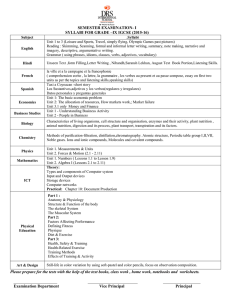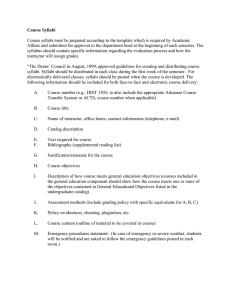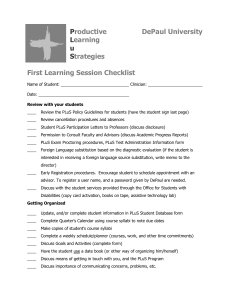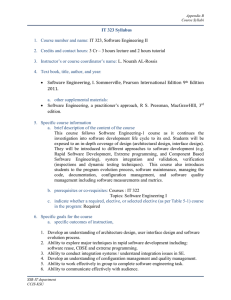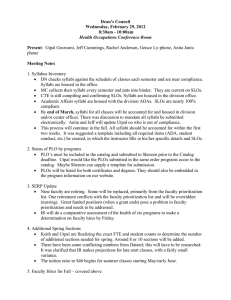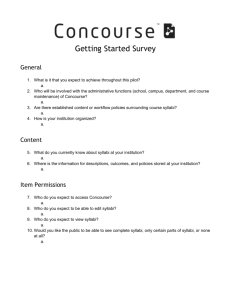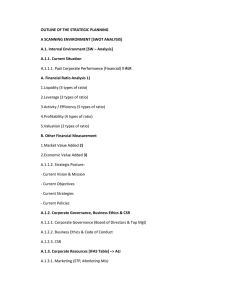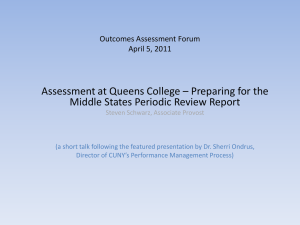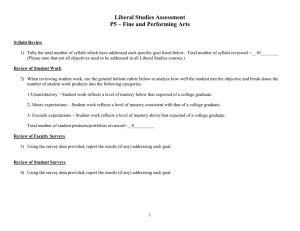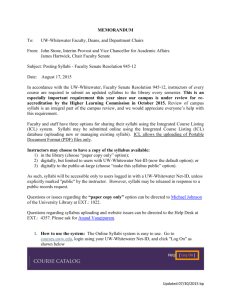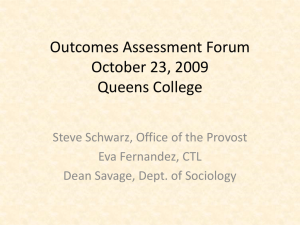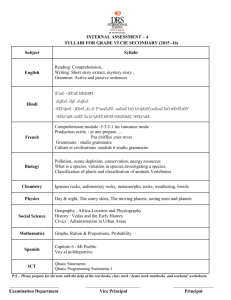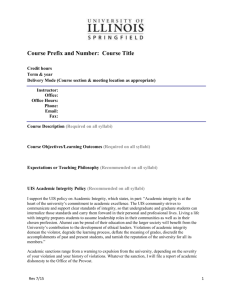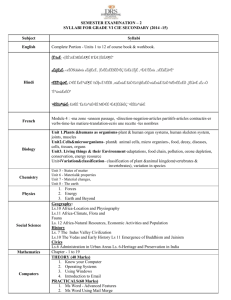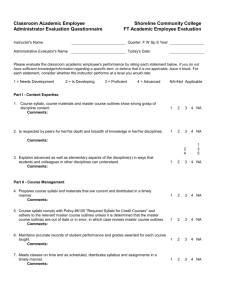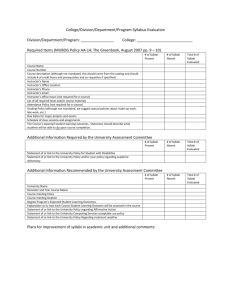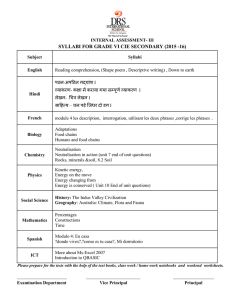Course Mapping
advertisement
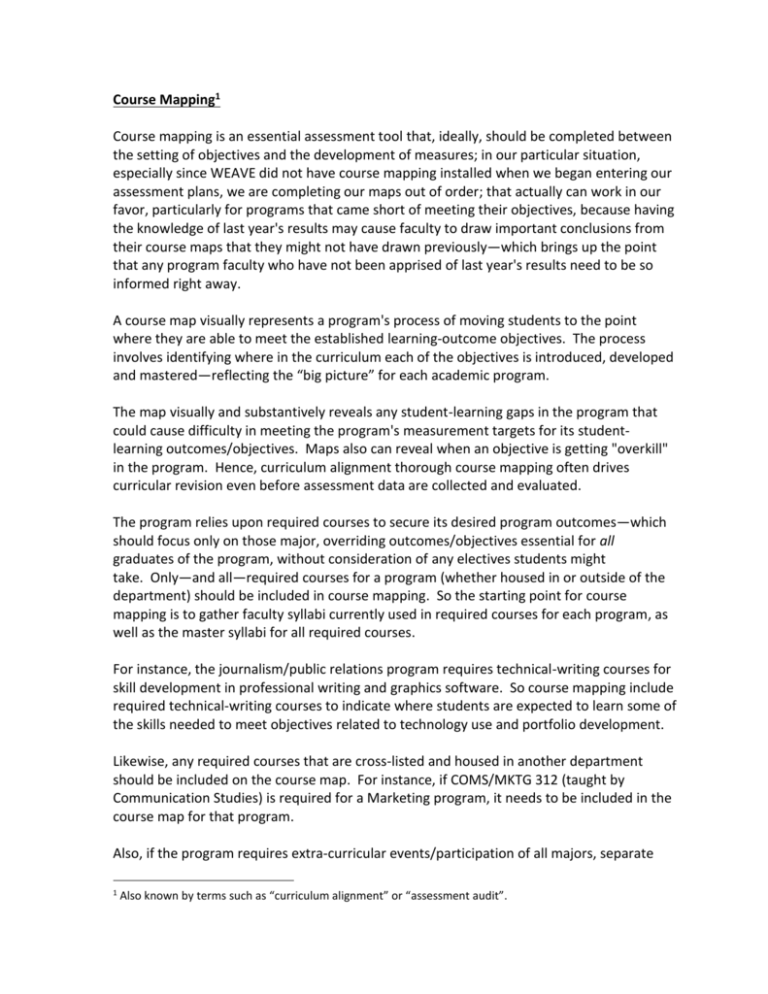
Course Mapping1 Course mapping is an essential assessment tool that, ideally, should be completed between the setting of objectives and the development of measures; in our particular situation, especially since WEAVE did not have course mapping installed when we began entering our assessment plans, we are completing our maps out of order; that actually can work in our favor, particularly for programs that came short of meeting their objectives, because having the knowledge of last year's results may cause faculty to draw important conclusions from their course maps that they might not have drawn previously—which brings up the point that any program faculty who have not been apprised of last year's results need to be so informed right away. A course map visually represents a program's process of moving students to the point where they are able to meet the established learning-outcome objectives. The process involves identifying where in the curriculum each of the objectives is introduced, developed and mastered—reflecting the “big picture” for each academic program. The map visually and substantively reveals any student-learning gaps in the program that could cause difficulty in meeting the program's measurement targets for its studentlearning outcomes/objectives. Maps also can reveal when an objective is getting "overkill" in the program. Hence, curriculum alignment thorough course mapping often drives curricular revision even before assessment data are collected and evaluated. The program relies upon required courses to secure its desired program outcomes—which should focus only on those major, overriding outcomes/objectives essential for all graduates of the program, without consideration of any electives students might take. Only—and all—required courses for a program (whether housed in or outside of the department) should be included in course mapping. So the starting point for course mapping is to gather faculty syllabi currently used in required courses for each program, as well as the master syllabi for all required courses. For instance, the journalism/public relations program requires technical-writing courses for skill development in professional writing and graphics software. So course mapping include required technical-writing courses to indicate where students are expected to learn some of the skills needed to meet objectives related to technology use and portfolio development. Likewise, any required courses that are cross-listed and housed in another department should be included on the course map. For instance, if COMS/MKTG 312 (taught by Communication Studies) is required for a Marketing program, it needs to be included in the course map for that program. Also, if the program requires extra-curricular events/participation of all majors, separate 1 Also known by terms such as “curriculum alignment” or “assessment audit”. from required courses, that information also should be included on the program's course map. Activities included within a required course would not fall into this category, since they already are included in mapping of that course. But if the program requires something in addition to required courses, fulfilled/submitted separate from any course, then that requirement should be mapped (i.e., end-of-program portfolio, an exit exam, attendance at professional conferences, etc., if not completed as part of a required course). Example Course mapping need not be complicated. It simply involves developing a master chart for each degree that indicates which objectives are being met, to what extent, and how often. This practice identifies whether an objective is “introduced”, “developed” and/or “mastered” within a given course; you might find it helpful also to record on your chart any classroom-based assessment measures used to demonstrate that claim. Such alignment analysis allows the faculty to determine more easily whether the overall curriculum is cohesive and provides for systematic development of desired student-learning outcomes. Sample Course Mapping Chart Objective 1 Objective 2 Objective 3 Required Course/Activity 101 I 152 I 201 D 220 D 310 D 238 M 410 480 (capstone) M M Conference M Presentation I=Introduced, D=Developed, M=Mastered Objective 4 Objective 5 I I D D I D M D/M M M M M M Adapted from Mary Allen’s Assessing Academic Programs in Higher Education (Jossey-Bass, 2004). This course map indicates that Objectives 1 and 5 are well cultivated in this academic program, that Objective 3 is minimally nurtured, that Objective 2 is orphaned after the developmental level, and that Objective 4 expects student mastery in an area that is neither introduced nor developed prior to the capstone course. This information helps the program’s faculty identify needed changes in master syllabi and related faculty syllabi. On a related note, especially for master syllabi that have not been reviewed recently, the course-mapping process frequently results in updating/upgrading of departmental master syllabi and/or individual faculty syllabi that may have omitted critical introduction, development, and/or mastery material essential for specific required courses.
